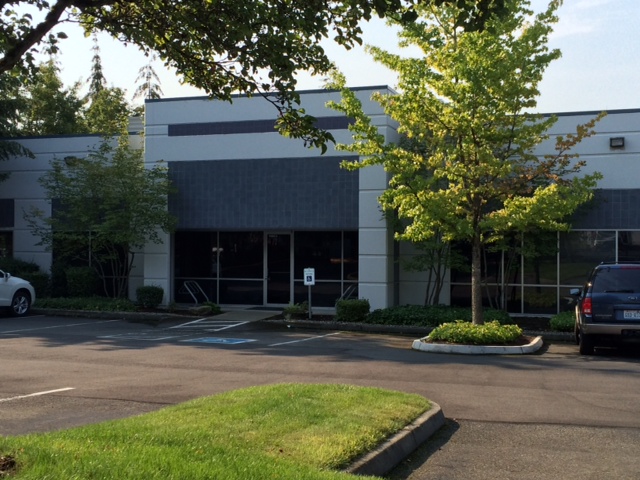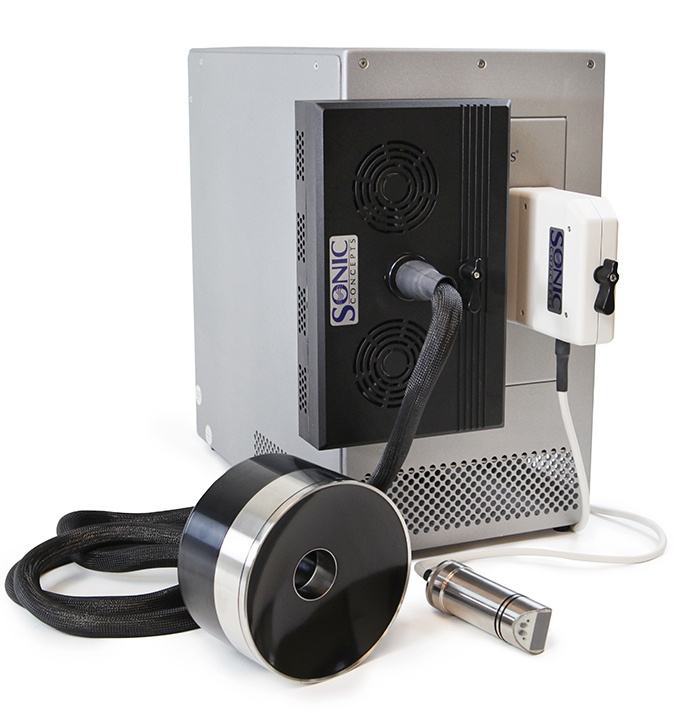 Seattle Area-based Verasonics designs and develops a programmable research ultrasound platform that optimally combines energy application and image monitoring all in one for focused ultrasound (FUS) research, development, and commercialization. In addition to therapy, Verasonics’ research ultrasound systems are used for investigation in novel imaging techniques, physics, materials testing, education, and other applications.
Seattle Area-based Verasonics designs and develops a programmable research ultrasound platform that optimally combines energy application and image monitoring all in one for focused ultrasound (FUS) research, development, and commercialization. In addition to therapy, Verasonics’ research ultrasound systems are used for investigation in novel imaging techniques, physics, materials testing, education, and other applications.
From supplying researchers with powerful, flexible benchtop systems to licensing their intellectual property to large and small companies, Verasonics is seeking to enhance their contribution to the FUS community. “We are expanding our portfolio of products dedicated to focused ultrasound,” says Lauren Pflugrath, President and CEO. “In 2017 we will be introducing a portfolio of new HIFU and imaging array combinations and tools for use together with the full range of our Vantage Research Systems. We will offer budget-friendly options fit for researchers who are just getting started as well as solutions for those who desire to perform focused ultrasound preclinical research and clinical research under IRB.”
Verasonics is interested in becoming more directly involved with the FUS community. “We cater to scientists along the entire range of the research and development continuum,” says Pflugrath. “Our technical expertise is something that we can offer to collaborative projects, and we look forward to developing new partnerships to advance the technology and expand the range of achievable bioeffects, especially when ultrasound guidance is preferred.”
To learn more, we interviewed Lauren Pflugrath, President and CEO, Mike Vega, Vice President of Sales, and Jon Daigle, Director of Corporate Development.
Q & A with Verasonics
Q. How was Verasonics started?
The company founders, Ron Daigle, CTO, and Lauren Pflugrath, CEO, worked together at ATL/Philips for many years. After leaving, they jointly began consulting with ultrasound manufacturers. “We developed our first product in a joint development project with a commercial licensee. In 2007, we launched the V-1 as a dedicated research ultrasound system based on its unique pixel-oriented processing method of software beamforming, which enabled real-time access to RF data.” This was the first commercially available research system that provided the ability to program everything at the per-channel level on both transmit and receive and enabled plane wave and very high frame rate imaging.
Q. Where did the company’s name come from?
In Latin, the word “Vera” means true – true sonics. And sonics is the branch of science that deals with the practical applications of sound. So, Verasonics is the true scientific and practical application of sound.
Q. Tell us about your company structure: ownership, lead executives, and their roles. How many employees and locations?
Verasonics was founded in 2001 by Ron Daigle, and Lauren Pflugrath joined in 2005. The company remains privately held. With nearly 30 employees, they are headquartered in Kirkland, Washington near Seattle. Verasonics also has a European office in in the UK and Asian distributors in China, Hong Kong, and Japan.
 Q. In general, what is the current status of your company?
Q. In general, what is the current status of your company?
The company’s three primary business lines are:
(1) selling research systems to universities, research institutes, government entities, and others;
(2) licensing technology to commercial companies; and
(3) consulting with commercial licensees.
Verasonics currently has research customers at nearly 200 sites, including universities, research institutes, government entities, private and public companies, and others in 23 countries. “We have executed numerous commercial technology licenses across a broad range of areas including general diagnostic ultrasound imaging, breast imaging, renal denervation, orthopedic surgery, drug delivery, and brain applications. Three of these devices have achieved FDA clearance, and others are currently in clinical trials. While our list of licensees includes one of ‘Forbes Top 20 Global Public Companies,’ we are interested in exploring potential technology licenses with companies of all sizes and at all stages.”
Q. In terms of intellectual property, how many patents does the company hold?
By family, five have been issued in some or all of the major countries with the remaining countries pending, and two other applications are pending.
 Q. What products and services do you offer to the focused ultrasound community?
Q. What products and services do you offer to the focused ultrasound community?
Verasonics provides advanced capabilities for high-intensity focused ultrasound (HIFU) on the Vantage Platform using 1- to 256-element arrays. With a suitable third party transducer, this system can induce thermal ablation, histotripsy, cavitation, sonoporation, and other high energy techniques. Vantage also offers a range of configurations for performing conventional imaging pulses and longer bursts used in coded excitation or radiation force imaging techniques. The Vantage Platform’s custom transmit power supply allows for both high power (up to 2000 Watts RMS) and imaging using the same transmitters. Using the same transmitters allows users to rapidly interleave between HIFU (ablation) and imaging (monitoring) during an intervention. All of the ultrasound guidance and HIFU can be performed with the stand alone system. Alternately, it can also be used for HIFU delivery under MR guidance.
Vantage is the most compact HIFU array driving system available today. It provides a unique, single-system solution for US-guided FUS, but it is also MR compatible. For MR-guided FUS, users place the shielded drive system in the magnet room and use an optical data link to the computer outside of the room. Placing the host controller (a Dell computer) in an external location gives the users more flexibility. The optical link uses high-speed peripheral component interconnect express (PCIe) to transfer data to the host computer.
Q. What challenges are you tackling?
We aim to provide tools that enable research from laboratory to clinical settings with institutional review board (IRB) approval. We are constantly improving our hardware and software platform to enable greater flexibility, performance, and ease of use. In the field of focused ultrasound, we are working with array manufacturers to more tightly integrate our platform with commercially available high power transducers. We believe that dual-mode arrays will enhance USgFUS capability during the research stage–and potentially also enable it in the clinical setting–by performing guidance, monitoring, and delivering therapy through the same device. As we look at next generation and improving Vantage, we look at adding new capabilities.
Q. What are the benefits of your products over other companies?
We offer a research ultrasound platform that enables single developer innovation. Our Vantage Research System is able to both image and to deliver HIFU energy and it continues to lead the research ultrasound market in flexibility, performance, and breadth of supported applications. We deliver the best technical customer support in the industry, and provide free training courses and individual consultation at both select conferences and at our main office in Kirkland.
Q. Which focused ultrasound companies are your largest partners? Which commercial successes have you contributed to?
We work closely with many different transducer manufacturers based on our research customers’ needs, but most often partner with Sonic Concepts (Bothell, Washington) in the area of focused ultrasound. Together, we have integrated the Vantage platform with a Sonic Concepts HIFU array and one of their coaxially mounted MR-compatible imaging arrays, and demonstrated the 10 meter ultrasound cable for use in the MR magnet room. You can see a video of the system, along with several others, on our website.
